Rack Servers are essential in modern data centers, offering scalability, efficiency, and high-density configuration. They integrate seamlessly into existing infrastructures, allowing businesses to optimize computing resources effectively.
These servers provide a modular approach, enabling businesses to scale operations based on demand without making significant changes to the existing infrastructure. Users appreciate the flexibility and customization Rack Servers offer, allowing them to choose specific configurations that best fit their operational needs. With advancements in cooling technologies and energy-efficient components, these servers are not only powerful but also environmentally friendly, helping organizations reduce their carbon footprint while maintaining performance.
What are critical features of Rack Servers?In industries like finance and healthcare, Rack Servers are implemented to manage large amounts of data securely and efficiently. They support complex applications and offer customization options crucial for compliance and data protection standards required in these sectors. Industries leverage these servers for reliable performance and adaptability to technological advancements.
Rack Servers are helpful for organizations as they provide scalable and efficient solutions for managing IT infrastructure. They allow businesses to keep up with technological changes and ensure continuity by offering reliable server solutions with high levels of performance and customization.
| Product | Market Share (%) |
|---|---|
| Dell PowerEdge R-Series | 26.4% |
| HPE ProLiant DL Servers | 20.9% |
| Lenovo ThinkSystem Rack Servers | 13.8% |
| Other | 38.900000000000006% |
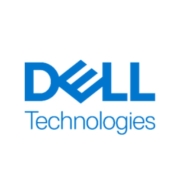

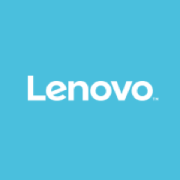





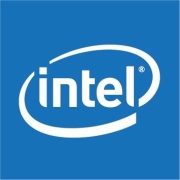








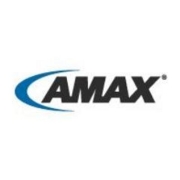

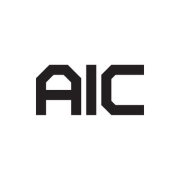









You can often find rack servers in data centers because of the scalability they provide. Assembling the servers on racks also maximizes air flow and simplifies maintenance and diagnostics. If there is a problem, you can just slide the server out of the rack.
A type of rack server called a rugged rack server is often used in military and industrial applications. These servers are certified to military standards and stress-tested to work under extreme heat or cold, impact, high humidity, or vibration during transport.
One of the characteristics of rack servers is their convenience. IT personnel can slide them in and out of the server bay with ease. This feature enables technicians to swap parts if needed without the need for downtime.
The resources, services, and performance of the server will depend on the needs of a program or application that works on the server. Different use cases require unique server configurations and resources. For instance, a server installed in a remote military installation will require mobility, which a server installed in a commercial warehouse will not.
The number of servers a bay can hold will depend on the depth of the rack and its width. Most rack servers’ width is 19 inches, to fit a standard 19-inch server rack configuration.
Industry racks come in 19-inch, 23-inch and 24-inch widths. The height of the server bays is measured in rack units. A rack unit is 1.75 inches, and the most common rack heights are 42 and 44 units. Since this is equivalent to 77 inches of usable space, it allows you to stack a lot of servers.
Blade servers are the smallest in terms of size. They consist of a thin, lightweight, modular computer that can be positioned upright without taking much space. They often sit inside racks in what is called “blade enclosures” or systems. Blade servers are smaller and more mobile than rack servers.
Blade servers are, like rack servers, slideable and can be swapped hot. As such, they can be easily scaled and upgraded. They also consume less power than tower and rack mount servers. The downside of blade servers is that they are limited in their expandability because of their small size.
As a general rule, servers are more expensive than consumer-grade computers. They are designed, built, and tested to a stricter standard, thus vendors can charge more. A rack server can go from $400 and upwards, depending on the chassis. A mobile chassis, like the ones used for military operations, can be $1000 or more.
Rack servers offer much greater storage capacity than blade servers but still in a small, stackable size. Their convenience makes them more in demand, hence they cost more.
Rack Servers offer several benefits in a data center setting, including high-density hardware organization, efficient cooling and power management, and scalability. By stacking servers in racks, you maximize space usage and can easily upgrade or replace components. Rack Servers are designed for optimal airflow, reducing the risk of overheating. Their modular design makes them suitable for growing enterprises, allowing you to add more servers as your needs expand.
How do Rack Servers improve energy efficiency?Rack Servers improve energy efficiency through advanced cooling technologies and power management features. These servers utilize optimized airflow designs, allowing data centers to maintain cooler temperatures with less energy spent on air conditioning. Many Rack Servers also come equipped with power-efficient components and capabilities like dynamic voltage scaling, ensuring that only necessary energy is used during operations.
What factors should you consider when choosing Rack Servers for a business?When selecting Rack Servers for your business, consider factors such as server performance, scalability, integration needs, and budget. Evaluate your current and future workload demands to ensure the chosen Rack Servers meet performance requirements. Consider the ease of integration with existing infrastructure. Scalability is crucial for business growth, so choose servers that allow easy upgrades. Your budget plays a significant role in the decision process, balancing cost with server features and requirements.
How do Rack Servers compare to Blade Servers?Rack Servers and Blade Servers cater to different business needs. Rack Servers are versatile and suitable for various applications, providing easy upgrades and customization options. They excel in industries where mixed server configurations are necessary. Blade Servers, however, offer higher density and are ideal for data centers focusing on maximizing computing power per square foot. Blade infrastructures often require specific enclosures, presenting a steeper initial investment. Your choice between Rack and Blade Servers depends on your space, budget, and performance needs.
What is the importance of maintenance for Rack Servers?Regular maintenance is crucial for the optimal performance of Rack Servers. Proper upkeep ensures reliable operation and extends the lifespan of your equipment. Maintenance tasks include updating firmware, cleaning components to prevent dust buildup, verifying cooling systems function effectively, and monitoring server performance for potential issues. Scheduled maintenance helps prevent unexpected downtime and can save costs associated with emergency repairs and lost productivity.